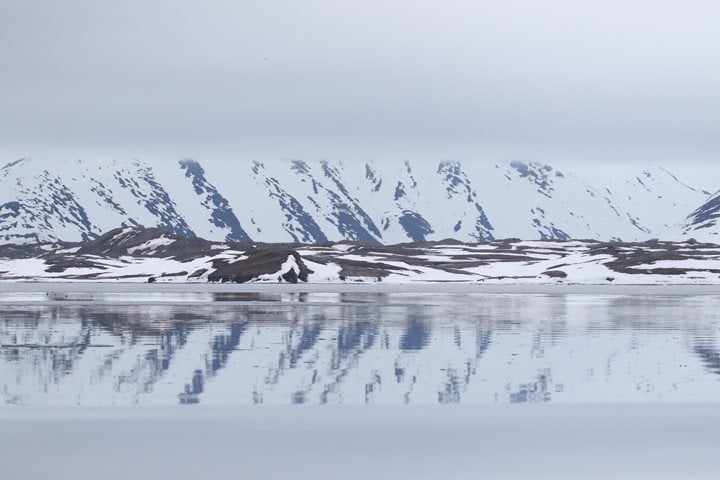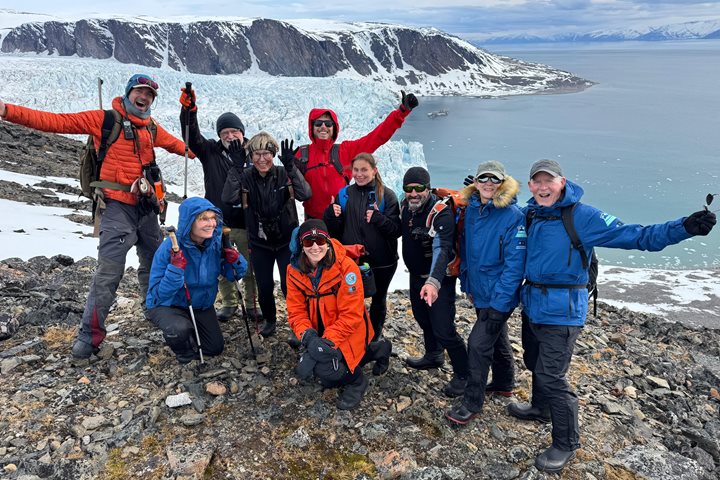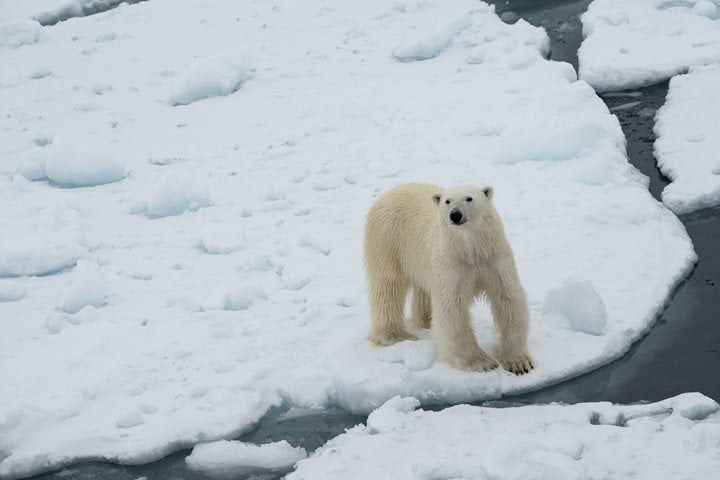Sometimes the most magical moments happen when we least expect them to. Most of the ship was fast asleep when our expedition leader’s voice came over the PA at 01:37 a.m. There was a polar bear just off the bow of the ship, our second one in less than twelve hours.
A parade of pajamas and fresh faces came scuttling out of the cabins towards the outer decks and the bridge to find the polar bear right in front of the ship. No binoculars required.
After the excitement, we kept making our way through the ice under the skillful navigation of our ice pilot. When our expedition leader made the next wakeup announcement, technically the second of the day, he let us know that our ship, National Geographic Resolution, had successfully transited a body of water called Freemansundet, which separates the islands of Barentsoya and Edgoya. Not only did we manage to transit, but we were the first ship of the season to make it to Eastern Svalbard. What a moment. There’s something incredibly special about knowing we were the first to explore this remote paradise in 2023.
After a peaceful breakfast watching the Austfonna Ice Cap, the third largest glacier in Europe (measuring over 7,800 sq km), naturalist Jackie gave a highly anticipated talk on polar bears. After the presentation, everyone was so transfixed that there was a free-flowing Q&A for over an hour.
A surprise BBQ at lunch offered quite the magnificent backdrop with the ship parked just on the edge of some fast ice. The scouting team went out first to ensure that the fast ice was safe for a landing before inviting guests to follow suit.
The day was full of surprises, and it ended with the polar plunge!







